Chinese Name: 香港历史博物馆 Pronunciation: Xiānggǎng Lìshǐ Bówùgǔan
Best Visiting Time: All year round
Suggested Visiting Hours: About 4 Hours
Museum Area: 17,500 square metres
Building Time: 1975
Address: 100 Chatham Road South, Tsim Sha Tsui, Kowloon, Hong Kong, China
Admission Ticket Fare: Free (There may be a charge for some special temporary exhibitions.)
Function: Preserving the cultural heritage of Hong Kong, and promoting public awareness and interest in the development of Hong Kong’s history and museum’s unique cultural heritage
| Dates | Opening Hours |
| Monday, Wednesday to Friday | 10:00-18:00 |
| Weekends & Public Holidays | 10:00-19:00 |
| Christmas Eve and Chinese New Year’s Eve | 10:00-17:00 |
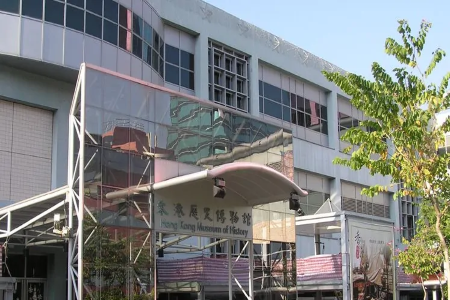
Hong Kong Museum of History was founded in 1975, and part of its collection comes from the City Museum and Art Gallery which was established in 1962. The museum was moved to Chatham Road South, Tsim Sha Tsui in 1998. The shape and colour of the Hong Kong Museum of History are in harmony with the adjacent Hong Kong Science Museum and forming a museum portfolio.
The exhibition themes of the Hong Kong Museum of History are mainly divided into the Theme of Natural History and the Theme of Cultural History, focusing on the 6,000 years history of Hong Kong. The theme of each exhibition area was taken into consideration when conducting the inner decoration, which is exquisite, realistic, and represents the feeling of experiencing the scene through time and space.
The display of the exhibition is divided into three parts:
(1) The natural environment of Hong Kong;
(2) The unearthed cultural relics, ancient stone carvings, and ancient kiln sites which reflect human activities in Hong Kong;
(3) The development of Hong Kong from a small fishing village to a metropolis.
The museum has more than 45,000 pieces of collections, which are divided into four categories: Archaeology, Local History, Folk Custom History, and Natural History. Among the Folk Custom History collections, there are Chinese traditional fishing boat models, fishing equipment, traditional agricultural tools, and daily utensils, etc. In terms of the Natural History collection, it mainly includes rocks and minerals from all over the world as well as butterfly and mollusc shells commonly seen in Hong Kong.
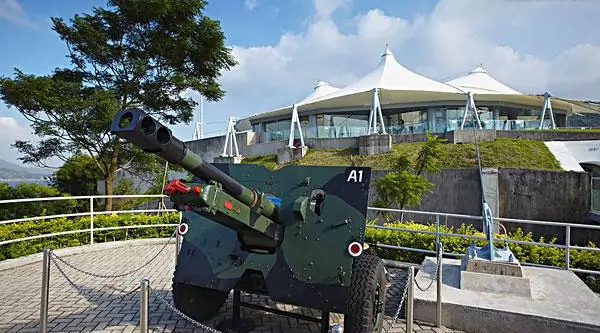
In addition to the main museum located in Chatham Road South, the Hong Kong Museum of History has five other branch museums, namely, the Hong Kong Museum of Coastal Defence in Shau Kei Wan, the Fireboat Alexander Grantham Exhibition Gallery in Hong Kong Quarry Bay Park, the Lei Cheng Uk Han Tomb Museum in Sham Shui Po, the Law Uk Folk Museum in Chai Wan, and the Dr. Sun Yat-Sen Museum in Acropolis Road, Central, Hong Kong Island.
Located on Tung Road, Shau Kei Wan, the Hong Kong Museum of Coastal Defence covers an area of about 34,200 square meters. Managed by the Leisure and Cultural Services Department, the museum consists mainly of old Lei Yue Mun Fort with a history of more than one hundred years. The Lei Cheng Uk Han Tomb Museum mainly includes the Lei Cheng Uk Han Tomb which was discovered by the Hong Kong Government in 1955, and two exhibition halls that introduce the history of the Han Tomb and display the unearthed cultural relics. Lei Cheng Uk Han Tomb was listed as a declared monument in 1988. Built in the 18th century, the Law Uk is the only ancient village house in Chai Wan and it was listed as a declared monument in November 1989. The Fireboat Alexander Grantham Exhibition Gallery mainly displays the fireboat Alexander Grantham which was made in Hong Kong in 1953 and retired in 2002. The Dr. Sun Yat-Sen Museum mainly introduces the life story of Sun Yat-Sen, the father of the Republic of China, and his connection with Hong Kong.
With a history of more than 100 years, the history of the museum can be traced back to the 1870s.
In the former Hong Kong City Hall, the main collection of the museum includes books, atlas, and animal and plant specimens. With the demolition of the former City Hall in 1947, the museum ceased to serve.
In 1962, a new Hong Kong City Hall was completed and opened, and the “City Museum and Art Gallery” was set up, marking the official launch of modern museum services in Hong Kong. In 1969, the museum was renamed “Hong Kong Museum and Art Gallery” and was managed by the former Urban Council.
In July 1975, the Hong Kong Museum and Art Gallery was divided into the “Hong Kong Museum of Art” and “Hong Kong Museum” to further expand the museum's services. The Hong Kong Museum of Art continued to use the site of the Hong Kong City Hall, and the Hong Kong Museum was settled in an office with a total area of 700 square meters in the Star House, Tsim Sha Tsui, Kowloon.
In 1983, the Hong Kong Museum was relocated to Kowloon Park. With the continuous development of the museum, there was a need to build a bigger museum.
In 1995, the government implemented the construction of a permanent site next to the Hong Kong Science Museum on Chatham Road South, Tsim Sha Tsui.
In 1998, the Hong Kong Museum was officially changed its name to “Hong Kong Museum of History”, and a new modern museum with a total area of about 17,500 square meters was opened. Since 2000, the museum has been managed by Leisure and Cultural Services Department.
The exhibition hall in the museum consists of a thematic exhibition hall with an area of 1,000 square meters and a permanent exhibition hall of “Hong Kong Story” which includes eight permanent exhibitions with a total area of 7,000 square meters. The “Hong Kong Story” exhibition hall mainly displays Hong Kong’s natural environment of 400 million years as well as the historical development and cultural heritage of 6,000 years.
The eight permanent exhibitions consist of the Natural Environment, Prehistoric Hong Kong, the Dynasties: From the Han to the Qing, Folk Culture in Hong Kong, The Opium Wars and the Cession of Hong Kong, Birth and Early Growth of the City, The Japanese Occupation, and Modern Metropolis and the Return to China.
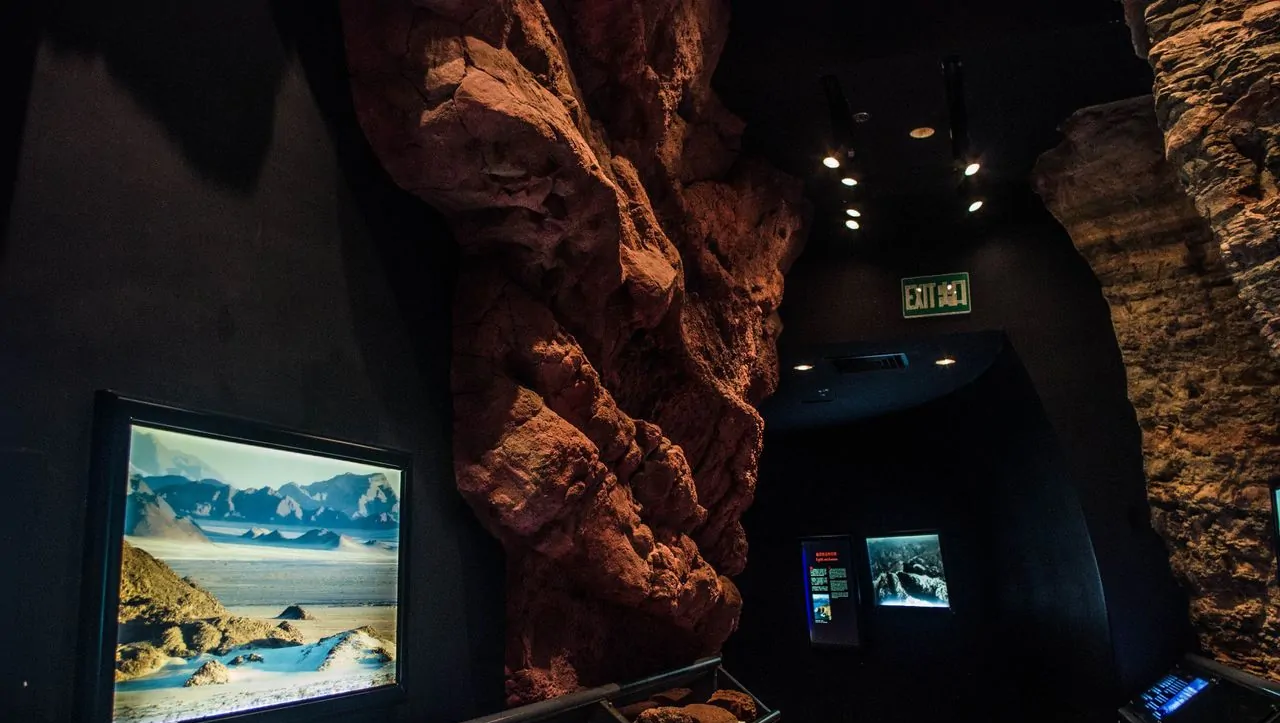
The exhibition area includes two parts: “Landform and Climate” and “Animals and Plants”. After entering the exhibition hall, visitors could get a better understanding of the location of Hong Kong by observing the terrestrial globe. On the way ahead, it is a time tunnel paved with fake stones. There are also rock and fossil specimens in this area, which display the geology and landform of Hong Kong for 400 million years. The movie showed here is “Hong Kong’s Natural Lifeline”, which is a film summarizing the geological evolution of Hong Kong.
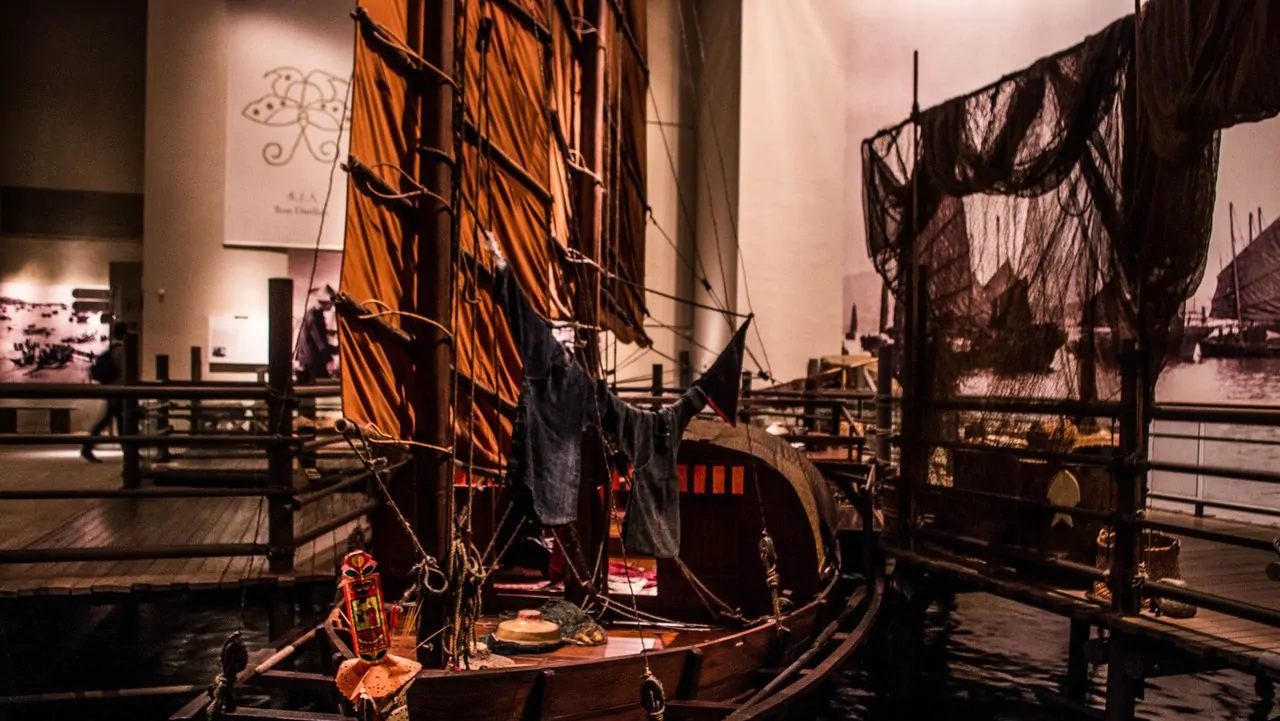
According to archaeological data, human activities have been carried out in Hong Kong as early as 6,000 years ago in the Neolithic Age. Most of their ancestors lived by the sea. In addition to displaying the prehistoric stone, pottery, and bronze artifacts unearthed in Hong Kong, this exhibition area has also built a 42 meters long beach scene, which imitates the scenes of cooking meals, building houses, and making stone tools and ornaments.
This exhibition area introduces the development of Hong Kong from the Qin and Han Dynasties to the Qing Dynasty mainly through cultural relics coming from Hong Kong and Shenzhen.
The film in this area is “Han Dynasty Tomb of Lei Cheng Uk”. The film is about four minutes.
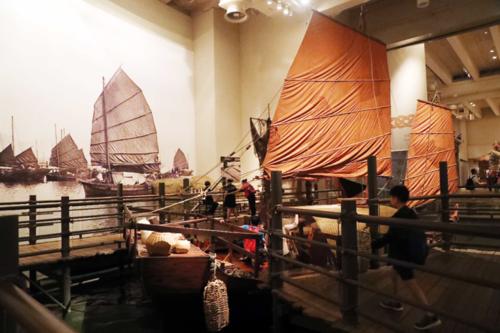
The exhibition area introduces the colourful life and customs of four major ethnic groups in Hong Kong and South China. Three traditional buildings stand in the centre of the exhibition hall, introducing the traditional wedding ceremony of local people and the custom of lighting during the Lantern Festival. This exhibition hall also introduces the farming life of the Hakka people. The film showed here is “Hong Kong Heritage”, in which visitors can acquire a comprehensive and in-depth understanding of Hong Kong’s local folk customs.
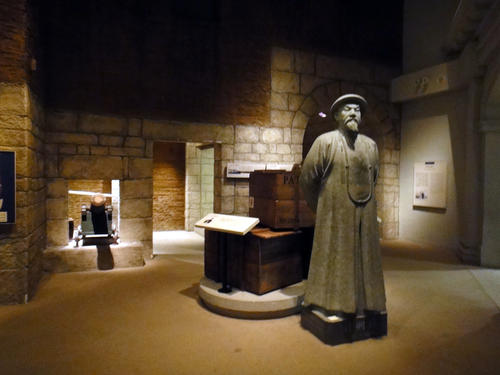
After losing the first Opium War, China was forced to cede Hong Kong to Britain. This exhibition area not only introduces the origin, process, and influence of the Opium War but also describes the opening of the New Sea Route, the Portuguese’s Management of Macao, the Thirteen Hongs of Canton, the early Sino-British relations, etc. To make visitors better understand the history of the war, the Humen Fort, the defensive fort of the Qing army against Britain during the First Opium War, was rebuilt in the exhibition hall. The film in the fort is “From Trade to War”, which will describe the development of Sino-Western relations and the whole process of the First Opium War.
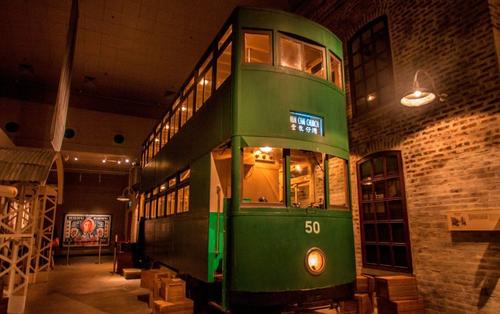
This exhibition area is a three-storey classical European building with a seaport scene and an enlarged old photo of Kowloon in the background. There is also an old Western yacht that moored on the seaport. Behind the building is an antique street, with tea shops, tailor shops, pawnshops, groceries, tea houses, post offices, banks, and business firms on both sides. Visitors can better understand the life of Hong Kong people before the war here. The films in the exhibition area are “Hong Kong’s Transportation” and “Hong Kong Moments”.
This exhibit is designed as an air-raid shelter. Dating back to December 25, 1941, after 18 days of arduous resistance, British colonial officials headed by Governor Mark Aitchison Young of Hong Kong surrenders to the Japanese. From then on, Hong Kong went through a dark period of three years and eight months. In this area, visitors can have a better understanding of the life of Hong Kong people during the Japanese occupation period by visiting the exhibits, historical photos, and films. The title of the film in the exhibition area is “Three Years and Eight Months”.
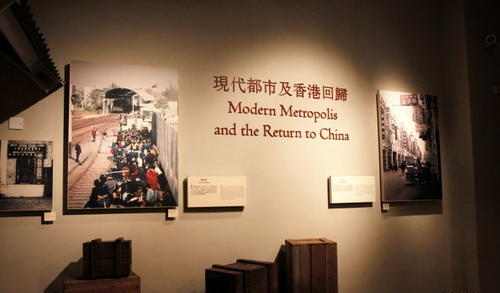
The first half of the exhibition area introduces Hong Kong’s rapid development in housing, industry, finance, and trade through multimedia programs and simulated barber shops, cinemas, and Trade Fair venues in the 1960s, displaying the social-economic situation and the development of popular culture in Hong Kong after the war. The second part introduces the whole process of Sino-Britain negotiations, the signing of The Joint Declaration, and the ceremony of The Return of Hong Kong through cultural relics, souvenirs, and important documents. The exhibition concludes with a large-scale multimedia program on relations between Chinese mainland and Hong Kong after the war.
There are three films in this exhibition area:
The first: Hong Kong Films and Television Programs in the 1960s-1970s. The film is about 10 minutes, and the room can seat 40 audiences.
The second: Natural Disasters. The film is about 6 minutes, and the room can seat 10 audiences.
The third: A Review of Sino-Hong Kong Relations from 1841 to 1997. The film is about 10 minutes, and the room can seat 40 audiences.
Take bus KMB 5C, 8, 8A, and get off at the Hong Kong Museum of History Station.
Take bus KMB N216, N241, N271, N281, or Kowloon Green Minibus No.8, and get off at Hong Kong Polytechnic University Station.
Route 1:Take MTR Tsuen Wan Line and get off at Tsim Sha Tsui Station (Exit B2). Walk eastward to Chatham Road South and then walk along Chatham Road South to the north and you will see the museum on your right.
Route 2: Take MTR East line and get off at Hung Hom Station (Exit D1). Walk westward along Cheong Wan Road for about 700 metres and you will see the museum at the crossing of Cheong Wan Road and Chatham Road South.
Chinese: 请带我去香港历史博物馆。English: Please take me to the Hong Kong Museum of History.
If you go to the Hong Kong Museum of History from Hong Kong Central, it takes about 15 minutes (about 60 HKD).
If you go to the Hong Kong Museum of History from Hong Kong West Kowloon Railway Station, it takes about 8 minutes (about 25 HKD).
If you go to the Hong Kong Museum of History from Hong Kong International Airport, it takes about 40 minutes (about 280 HKD).
